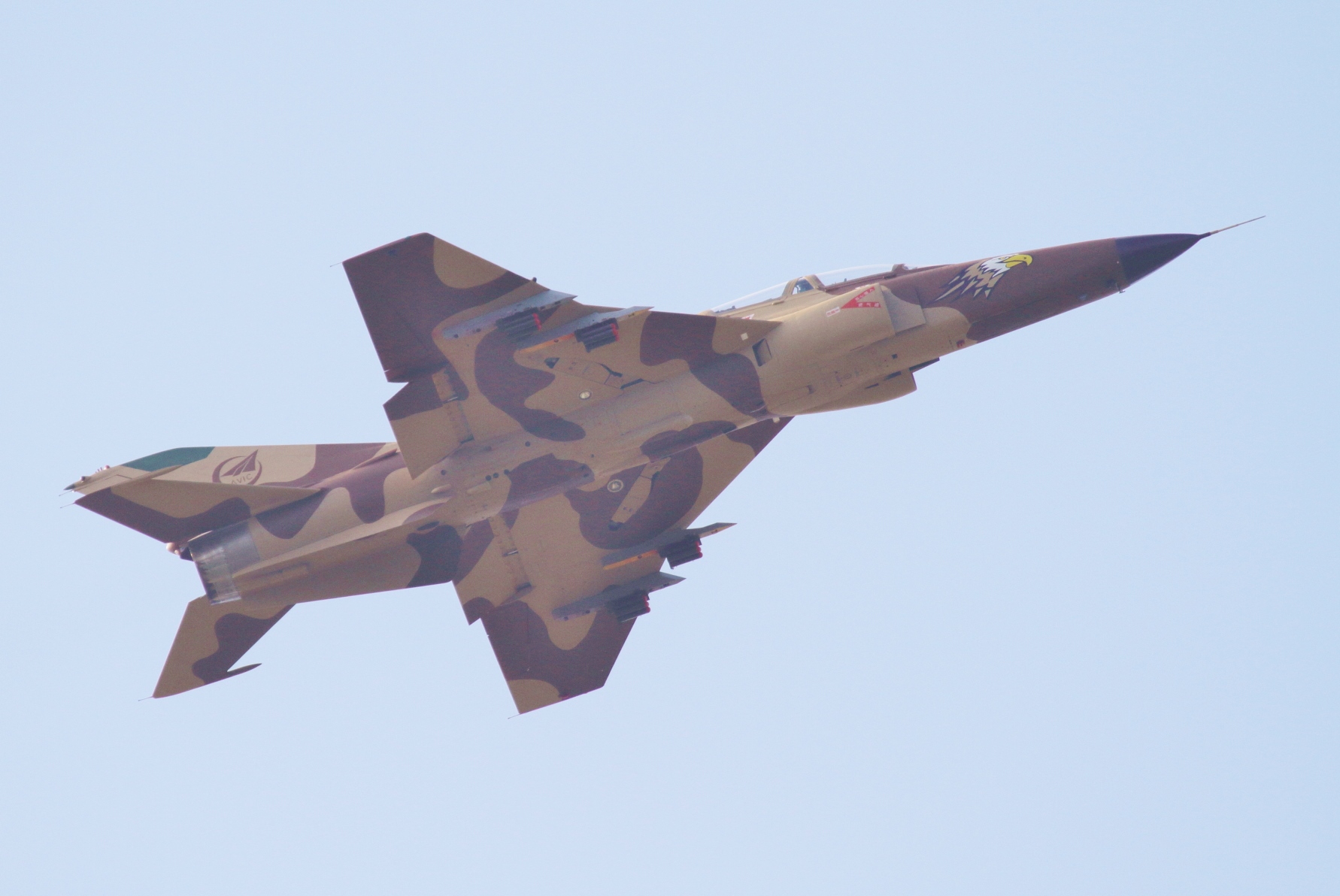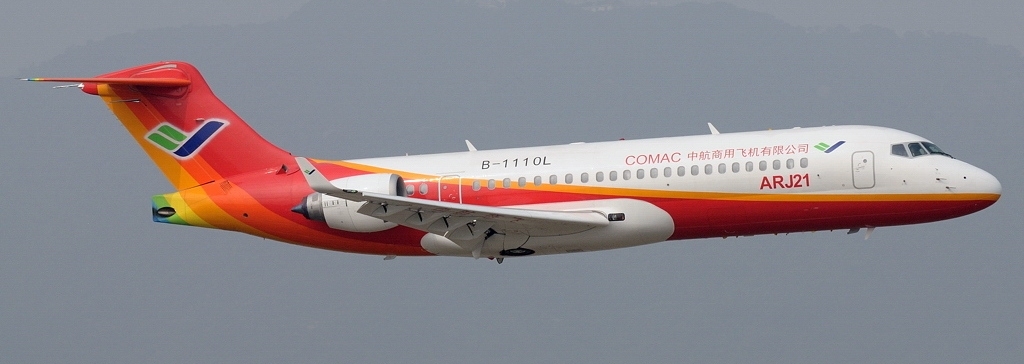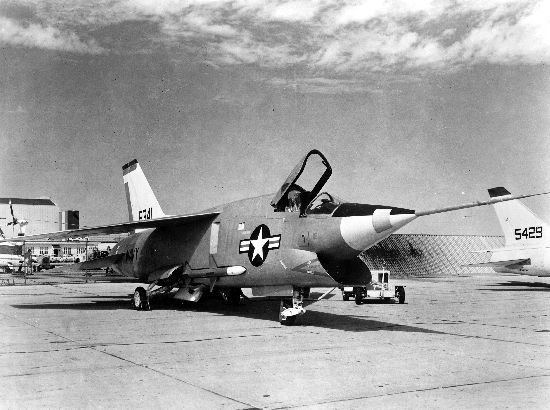|
Guizhou JL-9
The Guizhou JL-9, also known as the FTC-2000 Mountain Eagle (), is a family of two-seat supersonic advanced jet trainer and light combat aircraft developed by the Guizhou Aviation Industry Import/Export Company (GAIEC) for the People's Liberation Army Air Force (PLAAF) and the People's Liberation Army Naval Air Force (PLANAF). Development The FTC-2000 started as a GAIEC private venture to develop an inexpensive trainer for fourth generation aircraft. The trainer was revealed at the 2001 China International Aviation & Aerospace Exhibition. The aircraft are reported to be produced at a GAIC assembly line in Anshun, Guizhou. The FTC-2000, as the JL-9, competed with the Hongdu JL-10 to meet the advanced trainer requirements of the PLAAF and PLANAF. The JL-10 is more technologically advanced, but also more expensive, than the JL-9. In 2013, both had entered production. A carrier-landing trainer variant was revealed by Chinese state media in 2011. Designated the JL-9G, it has str ... [...More Info...] [...Related Items...] OR: [Wikipedia] [Google] [Baidu] |
China International Aviation & Aerospace Exhibition
China International Aviation & Aerospace Exhibition (), also known as the Airshow China () or Zhuhai Airshow (), is the largest airshow and aerospace trade expo in China. It has been held in even years in Zhuhai, Guangdong since 1996. History 1996 The first Airshow China was held from 5 to 10 November 1996. Performances included: * Su-27 cobra * Il-78 aerial refueling * British "Golden Dream" aerobatic team * "World Aerobatics Grand Prix" 1998 The second Airshow China was held from 15 to 22 November 1998. Performances included: * People's Liberation Army Air Force " August 1st" * Russian Knights * Canadian "Northern Lights" (later as Northern Lights Combat Air Support and now Lortie Aviation Inc.) using the Extra 300L * British "Golden Dream" aerobatic team * Russian Gromov Flight Research Institute cobra and aerial refueling 2000 The third Airshow China was held from 6 to 12 November 2000. Performances included: *Kamov Ka-50 * Sukhoi Su-30MK * People's ... [...More Info...] [...Related Items...] OR: [Wikipedia] [Google] [Baidu] |
Mikoyan-Gurevich MiG-21
The Mikoyan-Gurevich MiG-21 (russian: Микоян и Гуревич МиГ-21; NATO reporting name: Fishbed) is a supersonic jet aircraft, jet fighter aircraft, fighter and interceptor aircraft, designed by the Mikoyan, Mikoyan-Gurevich OKB, Design Bureau in the Soviet Union. Its nicknames include: "balalaika", because its planform (aeronautics), planform resembles the balalaika, stringed musical instrument of the same name; "''Ołówek''", Polish language, Polish for "pencil", due to the shape of its fuselage, and "''Én Bạc''", meaning "silver swallow", in Vietnamese language, Vietnamese. Approximately 60 countries across four continents have flown the MiG-21, and it still serves many nations six decades after its maiden flight. It set aviation records, becoming List of most-produced aircraft, the most-produced supersonic jet aircraft in aviation history, the most-produced combat aircraft since the Korean War and, previously, the longest production run of any combat air ... [...More Info...] [...Related Items...] OR: [Wikipedia] [Google] [Baidu] |
Tailhook
A tailhook, arresting hook, or arrester hook is a device attached to the empennage (rear) of some military fixed-wing aircraft. The hook is used to achieve rapid deceleration during routine landings aboard aircraft carrier flight decks at sea, or during emergency landings or aborted takeoffs at properly equipped airports. The tailhook was first demonstrated at sea on 18 January 1911 by the aviator Eugene Ely, having successfully landed aboard the armored cruiser USS ''Pennsylvania'' with the aid of the device. It was not until the early 1920s that a practical system, paired with deck-mounted arresting gear, was devised and put into use. During the 1930s, numerous vessels were thus equipped, permitting the use of increasingly heavy combat aircraft at sea during the Second World War. Following the introduction of jet-powered aircraft during the 1950s, arrestor technology was further advanced to permit aircraft operating at greater speeds and weights to land aboard aircraft car ... [...More Info...] [...Related Items...] OR: [Wikipedia] [Google] [Baidu] |
Arresting Gear
An arresting gear, or arrestor gear, is a mechanical system used to rapidly decelerate an aircraft as it lands. Arresting gear on aircraft carriers is an essential component of naval aviation, and it is most commonly used on CATOBAR and STOBAR aircraft carriers. Similar systems are also found at land-based airfields for expeditionary or emergency use. Typical systems consist of several steel wire ropes laid across the aircraft landing area, designed to be caught by an aircraft's tailhook. During a normal arrestment, the tailhook engages the wire and the aircraft's kinetic energy is transferred to hydraulic damping systems attached below the carrier deck. There are other related systems which use nets to catch aircraft wings or landing gear. These ''barricade'' and ''barrier'' systems are only used for emergency arrestments for aircraft without operable tailhooks. History Arresting cable systems were invented by Hugh Robinson and were utilized by Eugene Ely on his first land ... [...More Info...] [...Related Items...] OR: [Wikipedia] [Google] [Baidu] |
Flight Deck
The flight deck of an aircraft carrier is the surface from which its aircraft take off and land, essentially a miniature airfield at sea. On smaller naval ships which do not have aviation as a primary mission, the landing area for helicopters and other VTOL aircraft is also referred to as the flight deck. The official U.S. Navy term for these vessels is "air-capable ships". Flight decks have been in use upon ships since 1910, the American pilot Eugene Ely being the first individual to take off from a warship. Initially consisting of wooden ramps built over the forecastle of capital ships, a number of battlecruisers, including the British and , the American and , and the Japanese Akagi and battleship Kaga, were converted to aircraft carriers during the interwar period. The first aircraft carrier to feature a full-length flight deck, akin to the configuration of the modern vessels, was the converted liner . The armoured flight deck was another innovation pioneered by the Ro ... [...More Info...] [...Related Items...] OR: [Wikipedia] [Google] [Baidu] |
Aircraft Carrier
An aircraft carrier is a warship that serves as a seagoing airbase, equipped with a full-length flight deck and facilities for carrying, arming, deploying, and recovering aircraft. Typically, it is the capital ship of a fleet, as it allows a naval force to project air power worldwide without depending on local bases for staging aircraft operations. Carriers have evolved since their inception in the early twentieth century from wooden vessels used to deploy balloons to nuclear-powered warships that carry numerous fighters, strike aircraft, helicopters, and other types of aircraft. While heavier aircraft such as fixed-wing gunships and bombers have been launched from aircraft carriers, these aircraft have not successfully landed on a carrier. By its diplomatic and tactical power, its mobility, its autonomy and the variety of its means, the aircraft carrier is often the centerpiece of modern combat fleets. Tactically or even strategically, it replaced the battleship in the ro ... [...More Info...] [...Related Items...] OR: [Wikipedia] [Google] [Baidu] |
Mach Number
Mach number (M or Ma) (; ) is a dimensionless quantity in fluid dynamics representing the ratio of flow velocity past a boundary to the local speed of sound. It is named after the Moravian physicist and philosopher Ernst Mach. : \mathrm = \frac, where: : is the local Mach number, : is the local flow velocity with respect to the boundaries (either internal, such as an object immersed in the flow, or external, like a channel), and : is the speed of sound in the medium, which in air varies with the square root of the thermodynamic temperature. By definition, at Mach1, the local flow velocity is equal to the speed of sound. At Mach0.65, is 65% of the speed of sound (subsonic), and, at Mach1.35, is 35% faster than the speed of sound (supersonic). Pilots of high-altitude aerospace vehicles use flight Mach number to express a vehicle's true airspeed, but the flow field around a vehicle varies in three dimensions, with corresponding variations in local Mach number. The local spe ... [...More Info...] [...Related Items...] OR: [Wikipedia] [Google] [Baidu] |
Air Force Technology
The atmosphere of Earth is the layer of gases, known collectively as air, retained by Earth's gravity that surrounds the planet and forms its planetary atmosphere. The atmosphere of Earth protects life on Earth by creating pressure allowing for liquid water to exist on the Earth's surface, absorbing ultraviolet solar radiation, warming the surface through heat retention (greenhouse effect), and reducing temperature extremes between day and night (the diurnal temperature variation). By mole fraction (i.e., by number of molecules), dry air contains 78.08% nitrogen, 20.95% oxygen, 0.93% argon, 0.04% carbon dioxide, and small amounts of other gases. Air also contains a variable amount of water vapor, on average around 1% at sea level, and 0.4% over the entire atmosphere. Air composition, temperature, and atmospheric pressure vary with altitude. Within the atmosphere, air suitable for use in photosynthesis by terrestrial plants and breathing of terrestrial animals is found only in Ea ... [...More Info...] [...Related Items...] OR: [Wikipedia] [Google] [Baidu] |
Aviation Industry Corporation Of China
Aviation includes the activities surrounding mechanical flight and the aircraft industry. ''Aircraft'' includes fixed-wing and rotary-wing types, morphable wings, wing-less lifting bodies, as well as lighter-than-air craft such as hot air balloons and airships. Aviation began in the 18th century with the development of the hot air balloon, an apparatus capable of atmospheric displacement through buoyancy. Some of the most significant advancements in aviation technology came with the controlled gliding flying of Otto Lilienthal in 1896; then a large step in significance came with the construction of the first powered airplane by the Wright brothers in the early 1900s. Since that time, aviation has been technologically revolutionized by the introduction of the jet which permitted a major form of transport throughout the world. Etymology The word ''aviation'' was coined by the French writer and former naval officer Gabriel La Landelle in 1863. He derived the term from the v ... [...More Info...] [...Related Items...] OR: [Wikipedia] [Google] [Baidu] |
Diverterless Supersonic Inlet
A diverterless supersonic inlet (DSI) is a type of jet engine air intake used by some modern combat aircraft to control air flow into their engines. It consists of a "bump" and a forward-swept inlet cowl, which work together to divert boundary layer airflow away from the aircraft's engine. This eliminates the need for a splitter plate, while compressing the air to slow it down from supersonic to subsonic speeds. The DSI can be used to replace conventional methods of controlling supersonic and boundary-layer airflow. DSIs can be used to replace the intake ramp and inlet cone, which are more complex, heavy and expensive. Technical background The fundamental design of a gas turbine engine is such that the air flow-rate entering its compressor is regulated by the amount of fuel burned in its combustor. For supersonic flight the air entering the inlet also has to be regulated to a similar amount by the design of the entrance of the inlet duct (to minimize either drag, on the one ... [...More Info...] [...Related Items...] OR: [Wikipedia] [Google] [Baidu] |
Defense News
''Defense News'' is a website and newspaper about the politics, business, and technology of national security published by Sightline Media Group. Founded in 1986, ''Defense News'' serves an audience of senior military, government, and industry decision-makers throughout the world. ''Defense News'' was founded as a weekly newspaper by Army Times Publishing Company. ATPCO was sold in 1997 to Gannett Company (later renamed TEGNA), which sold it to Los Angeles-based private equity firm Regent in 2016, which renamed it Sightline Media Group. ''Defense News'' has a weekly television show about international defense and military issues. It first aired March 2, 2008, as ''This Week in Defense News with Vago Muradian'' on WUSA 9, a Washington, D.C., CBS affiliate. It later aired on ABC 7 WJLA and the Armed Forces Network. In April 2017, the show relaunched on WETA-TV as ''Defense News Weekly'' with two co-hosts: Jill Aitoro, ''Defense News'' executive editor; and Tony Lombardo, executive ... [...More Info...] [...Related Items...] OR: [Wikipedia] [Google] [Baidu] |
Hardpoint
A hardpoint is an attachment location on a structural frame designed to transfer force and carry an external or internal load. The term is usually used to refer to the mounting points (more formally known as a weapon station or station) on the airframe of military aircrafts that carry weapons (e.g. gun pods and rocket pods), ordnances (bombs and missiles) and support equipments (e.g. flares and countermeasures, targeting pods or drop tanks), and also include hardpoints (also known as pylons) on the wings or fuselage of a military transport aircraft, commercial airliner or private jet where external turbofan jet engines are often mounted. Aircraft In aeronautics, the term ''station'' is used to refer to a point of carriage on the frame of an aircraft. A station is usually rated to carry a certain amount of payload. It is a design number which already has taken the rated g-forces of the frame into account. Therefore, point loads on the structure from externally or internally mo ... [...More Info...] [...Related Items...] OR: [Wikipedia] [Google] [Baidu] |






.jpg)


